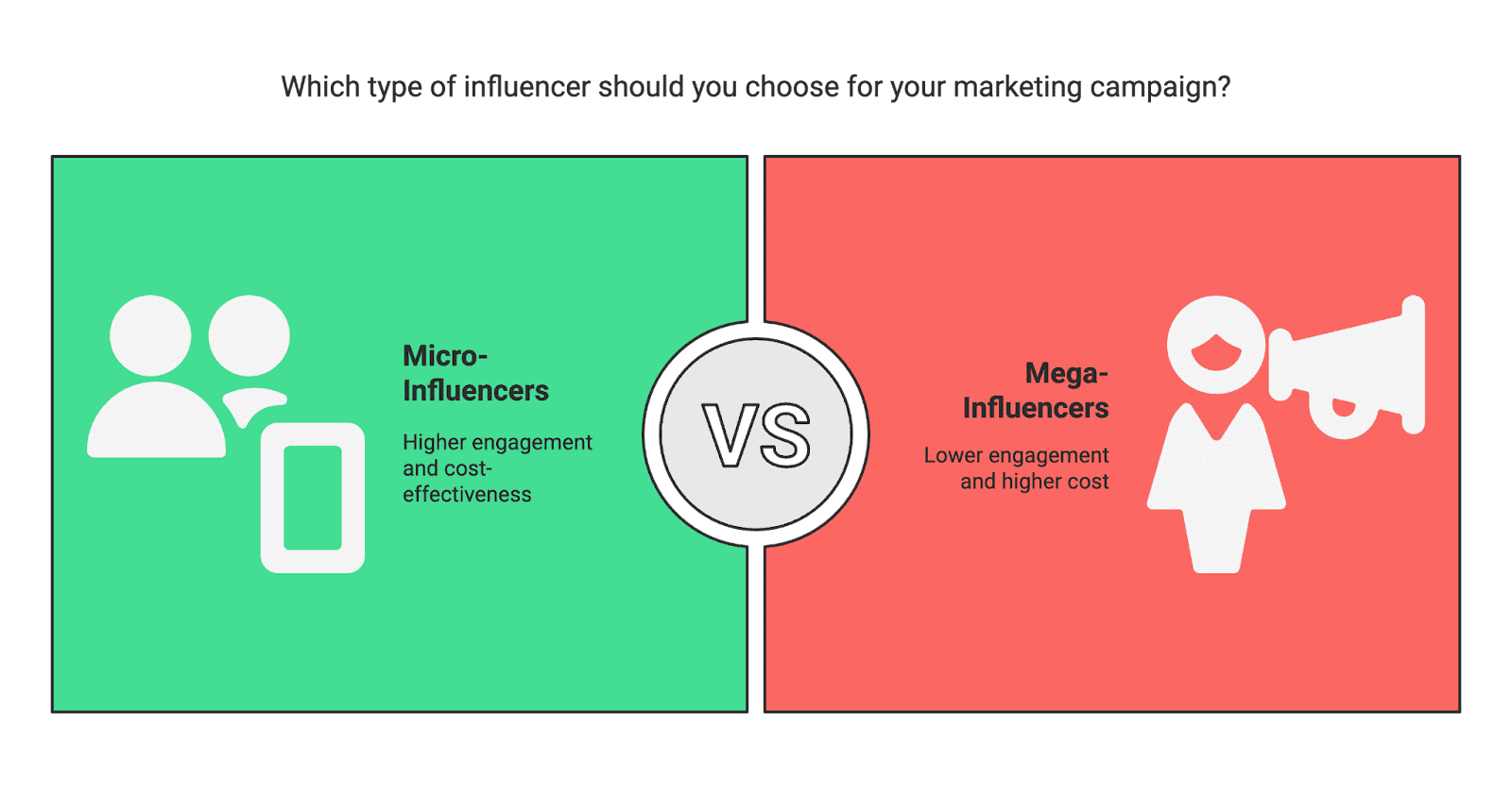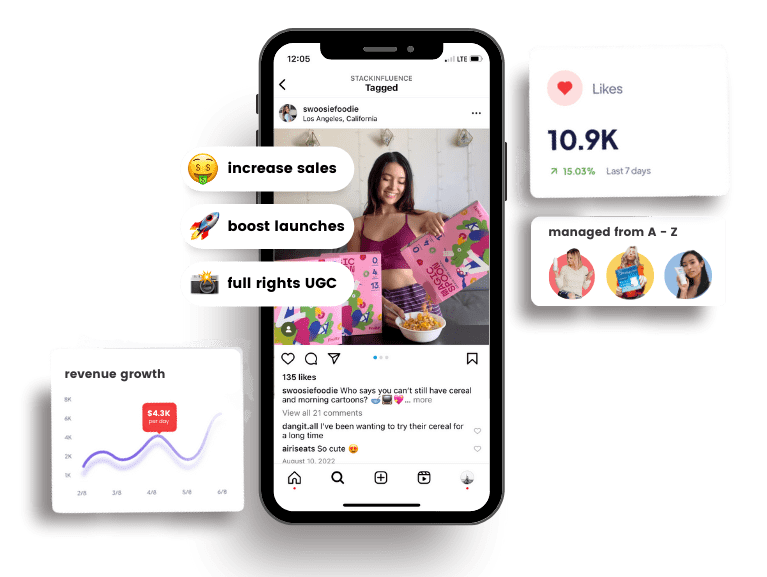Best E-commerce Marketing Strategies for 2025
1st
August, 2025
Influencer Marketing
Amazon Marketplace
Artificial Intelligence
TikTok Tips
E-commerce marketing in 2025 is all about authenticity, community, and innovation. Digital consumers are more savvy than ever, and brands must go beyond basic ads to capture their attention. In 2024, successful content strategies included brand storytelling, social commerce integration, user-generated content (UGC), content localization, and augmented reality experiences. Building on these trends, 2025 brings a fresh emphasis on micro-influencer marketing, short-form video, and AI-driven personalization to engage shoppers. Influencer marketing has become almost ubiquitous – an estimated 86% of U.S. marketers will use influencers in 2025 – and it’s evolving rapidly. Whether you’re an indie Amazon seller or a global brand, the playbook is shifting. In this blog, we break down the best e-commerce marketing strategies of 2025 (with real examples and stats) to help your brand thrive in the competitive online marketplace.
1. Embrace Micro-Influencer Marketing for Authentic Reach

Leverage micro-influencers (everyday content creators) to humanize your brand. Big follower counts don’t always translate to better results – in fact, smaller influencers often have far higher engagement rates. For example, creators with under 1,000 followers see about an 8% engagement rate, whereas mega-influencers over 10 million followers garner only ~1.6% engagement. That means their audiences are much more actively liking, commenting, and trusting their content. Micro-influencers (typically 5k–100k followers) are also more cost-effective – they might charge only a few hundred dollars (or just free product) per post versus thousands for a macro influencer, yet can deliver up to 60% higher engagement on those posts. It’s no surprise brands are working with more micro-influencers than ever – 33% more year-over-year – to fuel their social content and UGC needs.
Crucially, micro-influencers feel like real people and often have niche communities that trust them. 63% of consumers say they’re more likely to buy a product recommended by an influencer they trust, so these “everyday” creators can genuinely move the needle on sales. For e-commerce businesses (even Amazon sellers on marketplace platforms), partnering with micro-influencers is a powerful way to generate buzz, reviews, and social proof. High-end and small brands alike are catching on – for example, beauty retailer Glossier frequently works with micro-influencers on Instagram to showcase products in use, driving both engagement and direct sales via tagged posts. For businesses looking to scale their own e-commerce efforts, Third-Party Logistics (3PL) services provide tools to streamline orders and improve brand engagement. Leveraging tools to streamline your fulfillment and customer experience can further enhance the impact of influencer partnerships by ensuring timely delivery and customer satisfaction. Stack Influence – a leading micro-influencer marketing platform – notes that both DTC brands and Amazon sellers are using product seeding campaigns to turn happy customers into influencers at scale. By tapping into these relatable creators, you’ll get a stream of authentic content and word-of-mouth style promotion that traditional ads just can’t match.
2. Leverage User-Generated Content and Community Trust
In 2025, your customers are your best marketers. User-generated content (UGC) – like customer reviews, unboxing videos, testimonials, and social media posts about your products – is pure gold for e-commerce. Shoppers trust content from fellow consumers far more than polished brand promotions. In fact, studies show people trust UGC nearly 10× more than influencer or branded content because it feels genuine and unscripted. Prospective buyers want to see real-life experiences: how a shirt looks on a regular person, or how a gadget fits into someone’s daily routine. By encouraging your customers to share their experiences, you build a community around your brand and create an ongoing supply of relatable content.
How can you generate more UGC? Run campaigns that invite customers to participate: for example, create a hashtag challenge or a photo contest showcasing your product “in the wild.” Highlight and repost customer photos/videos on your official channels (with permission) – this not only provides you with fresh content but also makes your fans feel seen and valued. For instance, GoPro excels at this by regularly featuring their users’ adventure videos on GoPro’s social feeds. GoPro’s community members are eager to have their footage shared, which motivates even more people to post content – a virtuous cycle of engagement. Remember, 60% of consumers say that UGC is the most authentic and influential content when deciding what to buy. By amplifying real customer voices, you build trust with new shoppers who see ordinary people vouching for your products. And as a bonus, UGC often doubles as ready-made marketing material for ads, product pages, and social posts – saving your team creative resources while boosting credibility.

Unlock the Power of Micro Influencers and Elevate your Brand Today!

3. Tap into Social Commerce and Shoppable Media
Social media isn’t just for awareness anymore – it’s now a full-fledged sales channel. In 2025, successful e-commerce brands seamlessly integrate shopping experiences into popular social platforms. This means leveraging social commerce features like Instagram Shop, Facebook Shops, Pinterest Product Pins, TikTok Shop, and more. These tools allow users to browse and buy products without ever leaving the app, collapsing the funnel from discovery to purchase in a matter of clicks. For example, cosmetics brand Glossier made it easy for Instagram users to go from admiring a lip gloss in a post to purchasing it instantly via Instagram Shopping tags. By tagging products in posts and Stories – often on content created by influencers or customers – Glossier creates a frictionless path to buy. The result? An impulse discovery can turn into a sale within seconds, capitalizing on the consumer’s excitement in the moment.
To ride the social commerce wave, ensure your brand’s social profiles are set up for shopping with product catalogs and direct links. Optimize your content for each platform: use high-quality images and short videos that showcase products in action, since visual appeal matters. Don’t forget to pair organic content with strategic paid ads and influencer partnerships on these platforms to broaden your reach. Another tip is to take advantage of platform-specific features – for instance, TikTok’s algorithm can send a product video viral, but you’ll sell the most if you’ve enabled TikTok Shop or linked your products so viewers can buy instantly. Even Amazon is getting more “social” – Amazon Live streams and the Amazon Influencer Program let creators demo products and recommend their Amazon favorites to followers, blending entertainment with commerce. The bottom line: meet your customers where they scroll. If you can make your content shop-able on the social apps people use daily, you remove barriers to purchase and significantly boost conversion rates.
4. Engage Customers with Live Video and Short-Form Content
Static content is out; video is king in 2025’s e-commerce marketing. Two formats in particular are driving engagement: short-form videos (think TikTok clips, Instagram Reels, YouTube Shorts) and live-stream shopping events. Short-form videos are those addictive, bite-sized clips often under 60 seconds – and they’ve exploded in popularity for product discovery. Brands are leaning heavily into this trend: nearly 87% of influencer content for brands is now short-form video (with far fewer static image posts being used). These quick videos are perfect for showcasing a product in action, giving a bite-sized demo or testimonial, or hopping on a trending challenge that connects to your product. The viral nature of platforms like TikTok means a single creative video can skyrocket a product’s demand overnight. E-commerce sellers should create and encourage lots of short videos – both produced and user-generated – to keep feeding the social algorithms and capturing eyeballs.
Meanwhile, live commerce brings the old-school home shopping vibe to the digital era, with massively effective results. Live-stream shopping events (on Instagram Live, Facebook Live, TikTok, or dedicated apps) let you demo products in real time, interact with viewers, answer questions, and offer time-sensitive deals to spur purchases. This interactive format is incredibly engaging – viewers feel like they’re part of an event and get to see products “unfiltered” and ask questions before buying. It’s huge in Asia and rapidly growing globally. Brands that host live shopping sessions often see immediate sales spikes and higher engagement rates; one beauty brand reported thousands of viewers and a flurry of orders during a single Instagram Live product demo. Even smaller sellers can partner with influencers or stream themselves to tap into this trend. Live videos can dramatically boost engagement and sales by creating urgency and trust – it’s the next best thing to an in-person experience. To succeed, announce your live events ahead of time, offer exclusive discounts to viewers, and be energetic and responsive on camera. Whether it’s a QVC-style showcase of new arrivals or a casual “founder goes live to chat about products” stream, live commerce humanizes the online shopping experience and can significantly lift conversion rates. Combine that with the always-on power of short-form videos populating users’ feeds, and you have a video strategy that keeps customers hooked and ready to buy.
5. Tell Your Brand’s Story with Authentic Narratives
Storytelling remains one of the most potent marketing strategies for e-commerce brands in 2025. In a crowded digital marketplace, a compelling brand narrative helps you stand out and forge an emotional connection with customers. People don’t just buy what you sell – they buy why you sell it. Make sure your content highlights the story behind your brand: your mission, values, founding journey, the people and passion involved, and the impact you aim to make. Video is one of the most effective ways to share that story. To make this process easy many brands can use AI tools such as Renderforest text to video AI to turn written stories or product updates into short, engaging clips that feel personal and authentic. A strong narrative creates a personality for your brand that customers can relate to and remember. Authenticity is key – share real stories and values that resonate with your target audience’s beliefs or lifestyle. For example, outdoor apparel brand Patagonia is famous for weaving their environmental activism into their marketing. Their content often highlights sustainability efforts like the “Worn Wear” program (which encourages repairing and reusing gear) and profiles of adventurers who share Patagonia’s eco-values. This consistent storytelling around protecting the planet strikes an emotional chord with eco-conscious consumers and builds immense brand loyalty. Customers feel like they’re supporting a cause, not just buying clothes.
Every e-commerce brand can leverage storytelling in their content marketing. If you’re a small business, tell the origin story of how your product came to be. If you emphasize quality craftsmanship or ethical sourcing, take customers behind the scenes to see that process. Share customer success stories and testimonials as part of your narrative – for instance, how your fitness gear helped someone get in shape, or how your gadget simplifies a working mom’s day. These real-world stories not only provide social proof, they let potential buyers imagine the positive impact of your products in their lives. Consistency is important too: carry your brand narrative across all channels (your website, social media, emails, packaging) so that each touchpoint reinforces the same message. A good story makes your brand memorable and meaningful. In 2025’s marketplace, where new competitors pop up daily, a strong brand narrative anchored in authenticity and purpose can turn casual shoppers into devoted fans.
6. Personalize the Experience with AI and Data

One size does not fit all in e-commerce. Reliable website performance is key as brands adopt AI and data-driven tools. Many e-commerce businesses use VPS USA hosting to ensure fast load times, security, and smooth personalization experiences, especially when serving US audience.
Shoppers have come to expect personalized experiences – and thanks to advances in AI and data analytics, even small brands can deliver tailored content at scale. Personalization means using customer data (browsing behavior, past purchases, demographics, etc.) to present the most relevant products, content, and offers to each user. Done right, it makes shopping feel convenient and curated rather than like a generic catalog. The results can be game-changing: A survey found that 49% of customers ended up buying a product they hadn’t intended to, after receiving a personalized recommendation. Amazon pioneered this with those “Customers who bought X also bought Y” suggestions, and it’s incredibly effective – roughly 35% of all sales on Amazon are driven by their recommendation engine! The good news is you don’t have to be Amazon to use personalization. Plenty of e-commerce platforms and plugins (powered by machine learning) can automatically recommend products or content based on each visitor’s behavior.
Beyond product recommendations on-site, think about personalizing your marketing touchpoints. This could be personalized email campaigns (“Hey Alex, we thought you’d like these new shoes since you bought running gear last month”) or dynamic website content that changes based on user segments (first-time visitor vs. returning customer). AI chatbots are another 2025 must-have – modern chatbots can engage customers in real-time conversations, guiding them to products or answering questions 24/7 in a very personalized way. Many shoppers actually prefer a quick chat interaction to find what they need. In fact, e-commerce transactions via chatbots are projected to reach $142 billion in 2025, as more consumers turn to messaging for shopping assistance. Whether it’s a virtual stylist suggesting outfits or a chatbot helping pick the perfect gift, these AI-driven tools can mimic the attentiveness of an in-store sales rep.
To implement personalization, start by gathering customer insights (web analytics, purchase history, surveys). Then utilize tools or platforms that can crunch that data – this might involve integrating an AI recommendation engine or using built-in personalization features of your e-commerce system. Even simple steps help: segment your email list by customer interests, retarget visitors with ads showing the exact items they viewed, or use geo-targeting to display local currency and shipping info. Consumers in 2025 will gravitate toward brands that “get them.” By showing you understand their needs and preferences – and streamlining their path to find the right products – you’ll not only increase conversion rates but also foster loyalty. Just be sure to handle data respectfully and transparently (personalization should feel helpful, not creepy). When done ethically, personalization and AI can make every customer feel like your store was built just for them.

Unlock the Power of Micro Influencers and Elevate your Brand Today!

7. Localize Content for a Global Audience
The internet gives even the smallest seller a global reach – but succeeding in different regions requires more than just offering international shipping. To truly connect with customers in diverse markets, e-commerce brands must localize their content in 2025. This goes beyond simply translating product descriptions (though translation is a starting point). Content localization means tailoring your marketing to the language, culture, and preferences of each target market. Shoppers are far more likely to buy when the experience feels native to them. That means if you’re expanding to Latin America, for example, your website and ads should be in Spanish or Portuguese (in local dialects), prices in local currency, and references or imagery that fit the local culture. It also means being mindful of local holidays, seasons, and trends – promoting what’s relevant in each region at the right time.
Brands that invest in localization reap huge rewards. A great example is Nike’s approach in China: Nike doesn’t just translate English ads into Chinese; they create entirely unique campaigns around Chinese cultural moments. During Chinese New Year, Nike releases special edition products and runs festive campaigns tailored to that celebration. The content, visuals, and messaging all resonate with Chinese traditions and values, making local consumers feel understood and valued. This level of localization has helped Nike build a strong connection with customers in that market. Even smaller e-commerce merchants can take cues from this – for instance, if you notice a lot of orders from Canada or the UK, consider creating versions of your site and social content specifically for those audiences (with the correct spelling, slang, measurements, etc. for that region). Localization = personalization at scale by geography. It shows respect for your customers’ identities and lowers the barriers that might prevent a sale (like confusion over language or sizing).
Keep in mind that effective localization sometimes means tweaking your entire strategy per region. Different cultures have different social media habits, payment preferences, and marketing response patterns. Do the research (or leverage local partners) to learn what works in each market – maybe influencers are key in one country, while in another, email newsletters or messaging apps drive commerce. By speaking your customer’s language – literally and figuratively – you’ll significantly broaden your reach. In a world where global e-commerce is thriving, brands that localize will outpace those who assume one message fits all.
8. Offer Immersive AR Experiences to Bridge Offline and Online
Thanks to technology, the gap between online shopping and a real in-store experience is closing. Augmented reality (AR) and virtual try-ons have gone from a novelty to a game-changing e-commerce strategy in 2025. AR lets customers visualize products in their own environment or on themselves using just a smartphone – it’s the “try before you buy” concept brought to the digital world. Implementing AR can seriously boost customer confidence and engagement. For example, a furniture shopper can use AR to see how a couch would look in their actual living room, or a sneakerhead can point their phone at their feet to virtually “try on” a new pair of shoes. This not only wows customers, it alleviates doubts like “Will this fit or match my style?” – leading to more conversions and fewer returns. In fact, data shows that products featuring 3D/AR content have on average 94% higher conversion rates than those without. Shoppers feel more sure about their purchase if they’ve virtually experienced the product. And because they’re getting what they expected, brands using AR have seen product return rates drop by up to 40%, saving money on returns logistics.
Major retailers are rapidly adopting AR for these reasons – Gartner predicts 80% of retailers will deploy AR as part of the customer experience by 2025. But you don’t have to be a retail giant to get in the game. There are turnkey AR solutions now for e-commerce (Shopify, for instance, supports 3D models in product pages). Even simple implementations like 360-degree product images or “View in Room” AR widgets on your site can make a difference. A famous success story is IKEA’s AR app called IKEA Place, which allows users to superimpose true-to-scale 3D furniture models into their homes through their phone camera. Shoppers can virtually position that bookshelf or sofa in their space to see exactly how it fits and looks before ordering. This not only improves the buying experience (no more guessing if the color or size is right) but dramatically increases buyer confidence and satisfaction. Other brands use AR for virtual fitting rooms (beauty brands have AR filters to test different makeup shades on your face, eyewear retailers let you try glasses virtually, etc.). As AR technology continues to evolve and become more accessible via web and social media (e.g. Snapchat/Instagram AR try-on filters), consumers will come to expect this interactive experience. Early adopters are already reaping the benefits – those interactive AR filters and try-ons on social media have driven high engagement and direct sales for brands in fashion and beauty. In summary, integrating AR into your e-commerce strategy – whether on your own app/website or through social platforms – can significantly boost conversion rates, reduce returns, and delight customers in 2025’s competitive market.
Conclusion to Thriving in 2025’s E-commerce Landscape
The world of e-commerce marketing is more dynamic than ever, but the core theme is clear: put the customer at the center. The strategies above – from leveraging micro-influencers and UGC to embracing social commerce, video, storytelling, personalization, localization, and AR – all focus on creating a more authentic, engaging experience for shoppers. As one industry review summed up, brands need to adapt to these trends and use the full arsenal of new tools to stay ahead. The good news is that even small businesses can implement many of these tactics with the right partners and platforms. By experimenting with these 2025 strategies, you can drive more traffic, deepen customer engagement, and boost conversions for your online store.
By combining these approaches, e-commerce brands can offer an experience that feels!

By William Gasner
CMO at Stack Influence
William Gasner is the CMO of Stack Influence, he's a 6X founder, a 7-Figure eCommerce seller, and has been featured in leading publications like Forbes, Business Insider, and Wired for his thoughts on the influencer marketing and eCommerce industries.
Want new articles before they get published? Subscribe to our Awesome Newsletter.
stack up your influence
turning creativity into currency
our headquarters
111 NE 1st St, Miami, FL 33132
our contact info
[email protected]
stack up your influence
turning creativity into currency
our headquarters
111 NE 1st St, 8th Floor
Miami, FL 33132


